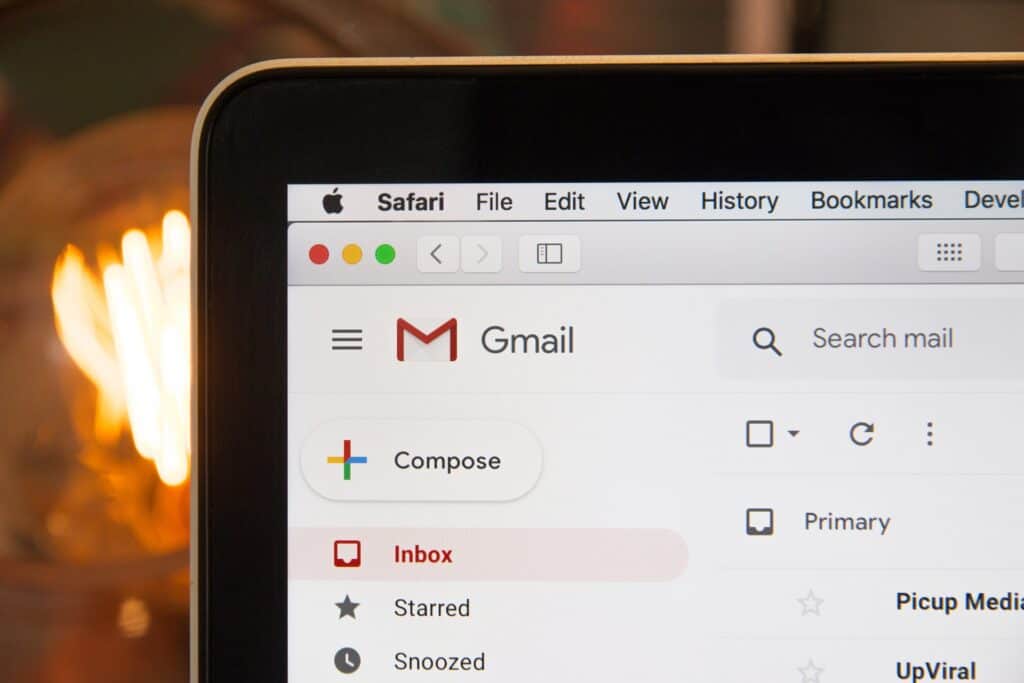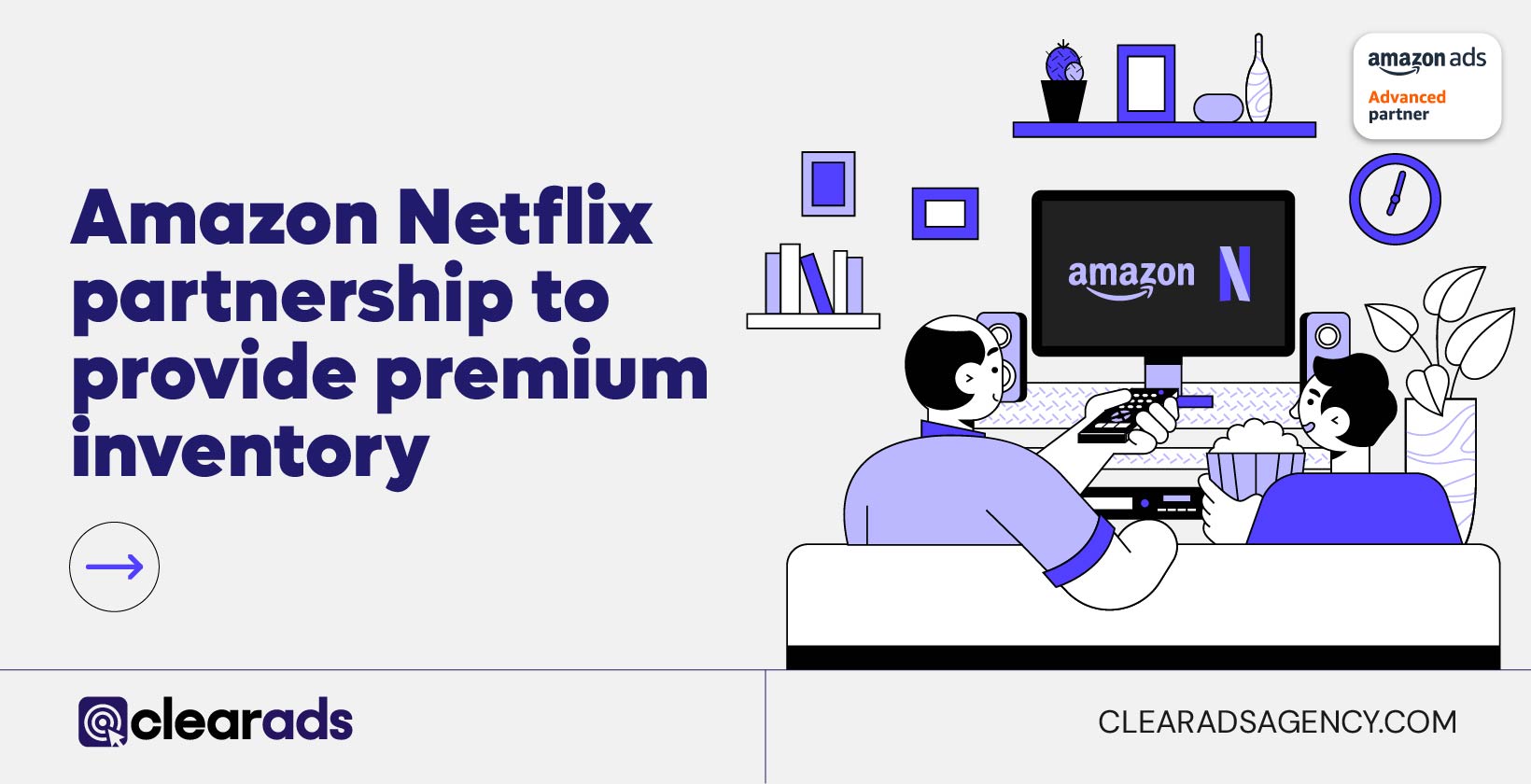Amazon is the biggest online sales platform in the world. And it’s growing all the time. In fact, in the 12 months between April 2021 and April 2022, Amazon’s net sales increased by almost 8 billion USD, bringing the total to a jaw-dropping 116.44 billion.
For sellers, this signals unlimited opportunities. By utilising the Amazon platform to sell their products, businesses are gaining access to a ready-made, hugely popular sales channel filled with customers who are actively looking to make a purchase.
It almost sounds too good to be true. And for some, it is. But, while Amazon is a hub of potential and opportunity, it’s not a magic solution. Sellers can’t simply list their products and start seeing them flying off the virtual shelves. Instead, they need to take a proactive role in getting their products in front of the right eyes.
And that’s where Amazon marketing can help.
Why Amazon Marketing?
The saying ‘if you build it, they will come doesn’t ring true when it comes to selling on Amazon. That’s because of just how massive the platform is. The level of competition is through the roof. In fact, more than half of all products sold on Amazon are now sold by third-party sellers, just like you, rather than by Amazon itself.
And with so many sellers, there are naturally going to be many products that will never be seen unless businesses are actively working to promote them.
Amazon marketing is a solution that will help sellers generate tangible results in such a fierce landscape. It’s the most effective and efficient way to get the right products in front of the right eyes – at the right time – to boost visibility and sales.
Amazon Marketing vs Amazon Advertising
In this guide, we cover the essential activities needed to build a strong, powerful Amazon marketing strategy, rather than simply an Amazon advertising strategy. While the two terms are often used interchangeably, marketing refers to the act of connecting customers with solutions, while advertising is a subcategory of marketing which relates to product promotion. By focusing on a comprehensive Amazon marketing strategy, our guide will cover three core areas of marketing:
- Organic online marketing on Amazon
- Paid advertising on Amazon
- Off-Amazon organic marketing & paid advertising
A good Amazon marketing strategy should combine all three of these areas. That’s how sellers will drive the best results and see the most return on their investment. Below, we’re breaking down the process of building an effective Amazon marketing strategy into these three distinct areas, making it easy to see how you can create a robust strategy to support you.
Organic Marketing on Amazon
Organic marketing is natural marketing. Unlike advertising, which actively influences potential customers, organic marketing is a way of building a positive, attractive, and engaging brand that naturally draws customers closer to your business.
Organic marketing is free, making it a highly cost-effective option. However, results are delivered in the longer term, unlike paid options, so it takes time to see returns.
Types of Organic Marketing on Amazon
There are many different types of organic marketing options available to Amazon sellers, which can be deployed through the platform itself. Top methods include:
Keywords

Search engine optimisation is one of the most important elements in organic marketing. It’s used to connect users searching for a specific solution with businesses offering that solution. Keywords are at the heart of any good strategy.
Frontend keywords are placed within your product listings. Amazon users can see those keywords in your content. Backend keywords are those added to your Seller Central settings. Customers don’t see them, but the algorithm does.
By considering the types of words and terms your target audience is searching for, you can incorporate these valuable keywords into your on-Amazon content, such as your titles and product descriptions, to build connections with high-quality leads.
Product copy
Even if users are ‘matched’ with a product through Amazon SEO, they still may decide not to purchase a product if the content within the listing doesn’t naturally engage or motivate them to take action. That’s why A-rated content is so important.
A-rated content is a term used to describe product copy that’s met four crucial criteria: strong titles, strong descriptions, strong visuals, and suitable length. When all four boxes are ticked, product conversion rates are typically much higher.
When product copy is optimised for customers and aligned to their needs, they are more likely to feel driven by that content to take the next step in the buying journey. So, product copy isn’t just informational; it can also be a powerful marketing tool.
A+ Content
A+ Content often gets bundled up with A-rated content, but the two are very different. While A-rated content is a framework for creating powerful product copy, A+ Content is an Amazon tool that helps sellers enhance their copy’s impact.
For sellers that qualify (most Brand Registry sellers), A+ Content provides features that go above and beyond Amazon’s standard product copy features. It can help to give your copy the ‘wow’ factor and engage better with visitors.
Features included with the A+ Content tool include bulleted lists within the main detail page, unique layouts, comparison charts, image carousels, links to other products from the seller, and a section to share more about the brand itself.
Product Images

Product images are something that many sellers – particularly new sellers – overlook. While they may select the main image (the image pulled through into the search results), Amazon suggests using additional images to improve engagement.
Amazon’s Manage Your Experiments tool can be valuable here. Accessed through Amazon itself, the tool enables you to create two listings for the same product, each with different images. Then, they run simultaneously to help you see what works best.
Manage Your Experiments doesn’t just work for product images; you can use it to run two versions of a listing with different product titles, too. Amazon also says that plans are already in motion to roll this tool out to A+ Content in the future, too.
Product Reviews
Inorganic marketing, peer-generated content is becoming increasingly valuable. As more and more shoppers begin to distrust information provided by a brand, they seek input from fellow customers who can provide a more objective opinion.
And so, while your product copy is essential, it’s also vital to ensure you’re incorporating peer-generated content from customers, too. Amazon allows you to do this by publishing customer reviews on your product listing pages.
Reviews can help visitors feel more trusting of your products and your brand. While this area can be tricky for newer sellers who have not yet built up a customer base, there are several Amazon Schemes, like Vine, which can help.
Q&A
Amazon’s Q&A feature works in a somewhat similar way to its review feature. It allows real customers to share their knowledge with potential customers. However, unlike reviews, it also enables you to share your knowledge, too.
The Q&A feature encourages potential buyers to ask any questions that they haven’t already been able to answer by reading the product description. These questions are emailed to sellers and recent customers who can then respond.
In terms of organic marketing, there are two huge benefits here. Firstly, the Q&A feature is another way to add trusted peer-generated content to your listing. Secondly, it’s a chance to engage directly with a lead and build a connection.
Product Specifications

Customers do not want to waste their time. When they click on a search result, they want to quickly be able to judge whether that product meets their needs. If they can’t do that, there’s a risk that your bounce rate will increase, and sales will drop.
There are two ways to make your product specifications, details, and key features easier to absorb. The first is using A+ Content to add bullet points into the listing, allowing customers to ‘scan’ the listing for the information needed.
The second way is to add necessary details to the ‘General Information’ section within Amazon. Here you can provide helpful information such as product dimensions, brand name, format, units, allergens (for consumables), and other critical data.
Pricing
Perhaps one of the most overlooked methods of organic marketing is pricing. The price you set for your products can have a massive impact on whether or not a customer decides to click through to your listing and learn more about the product.
However, pricing is also one of the most challenging aspects of organic marketing to get right. Price too low, and customers may question the quality of the product. Price too high, and customers may decide the product is too expensive.
Fortunately, Amazon does offer a feature that allows sellers to A/B test their pricing strategies. This feature means that sellers can run two versions of their product listing, each with a different price point, and assess which of the two listings performs the best.
Customer Service
Finally, the most crucial organic marketing method that every Amazon seller must consider is simply ensuring that they’re offering the highest level of customer service. Great customer experiences result in greater customer loyalty and repeat sales.
Improving customer service through Amazon may mean ensuring you’re responsive and answering any customer questions quickly. You can also respond to negative and positive reviews, follow up with buyers, and ask for feedback on your service.
Another way is to enrol in the Fulfilled by Amazon programme, or FBA. This means that Amazon handles all aspects of shipping and returns for you and allows you to offer free shipping. The FBA revenue calculator can help you make the right choice.
Best Practices for Organic Marketing

As it’s clear to see, organic on-Amazon marketing means being able to truly connect with your target audience. Therefore, it’s best practice to always provide the best possible buyer journey and customer experience for your shoppers. The secret to achieving this is to get to know your customers, understand their needs, and give them exactly what they’re looking for.
Helpful tools that can help with this include:
- Amazon Search Terms Report: An Amazon report which shows you the precise keywords that Amazon customers are using to find similar products.
- Demographics report: An Amazon report which shows the age, location, income, education level, and more about the people who are purchasing your products.
Amazon Advertising
Advertising campaigns and other forms of paid promotional activities help get a product, or a brand, in front of customers’ eyes to boost sales and revenue.
Many forms of Amazon ads do cost sellers. However, in some instances, they can begin to work very quickly, and results may be seen almost instantly.
Types of Advertising on Amazon
There are many different advertising options available to Amazon sellers, which can be deployed through the platform itself. Some top methods include:
Sponsored Display Ads
Sponsored Display Ads can be displayed on the Amazon home page and product detail pages. Unlike many pay per click campaigns, they are not based on keywords but behavioural/contextual signals from relevant audiences.
The use of behaviour signals helps to ensure that ads are served to the most qualified leads to boost outcomes. For example, depending on the targeting options selected, sellers can show ads to those who have expressed an interest in the product but have not made a purchase.
Sponsored Display Ads are typically used by sellers when they want to attract new customers and build up their customer base. These campaigns can be highly effective ways to remarket to new buyers who are perhaps sitting on the fence.
Sponsored Products Ads
Sponsored Products Ads allow sellers to advertise specific products. Like Sponsored Display, Sponsored Products are a form of PPC advertising. These ads are based on keywords rather than behaviours and appear within the Amazon search results.
When shoppers click on a Sponsored Products ad, they are directed to the relevant product listing page. Therefore, even if a user decides not to purchase a product, they are still familiar with the product and the brand for the future.
Sponsored Products Ads work best when sellers seek to maximise visibility and product awareness and increase sales of a particular item from their inventory, such as slower sellers and new products that may not already be popular on Amazon.
Sponsored Brands Ads

Sponsored Brands Ads are the brand-based equivalent of Sponsored Products. They work in much the same way. However, as well as directing traffic to a specific product listing, they can also direct users to the seller’s Amazon brand store.
As Amazon shifts from being a sales platform to a powerful sales and brand awareness channel, advertising campaigns like Sponsored Brands are becoming more and more popular, helping sellers engage with audiences through stories.
Today, price plays a much smaller role in the decision-making process than it once did. Shoppers don’t just want competitive prices; they actively want to buy from brands that share their values. Sponsored Brands Ads helps brands share their story.
Amazon Stores
Amazon Stores is one of the non-PPC methods of advertising that Amazon offers. And, unlike the fee-based Sponsored campaigns, Amazon Stores is a free feature available to sellers that participate in the Amazon Brand Registry programme.
Stores is a personalised brand page that provides sellers with their own eCommerce ‘site’ within the Amazon platform. It allows sellers to list all of their products in one place and introduce new shoppers to the brand through storytelling.
The ultimate purpose of Amazon Stores is to boost engagement and encourage shoppers to spend more time with a brand by providing an immersive experience. In addition, Amazon notes that the more pages within a Store, the longer shoppers spend there.
Best Practices for Amazon Advertising
As Amazon advertising techniques are primarily PPC-based, sellers need to ensure they’re doing two vital things. Firstly, they must target the right audiences and bid in the most effective ways to maximise visibility; secondly, they must direct traffic to the most engaging and persuasive landing pages.
Best practice strategies for Amazon Advertising should include:
- Targeting
- Bidding and dynamic bidding
- Ad creative
- Landing page design
- Testing
- Customer engagement
Helpful tools that can help with these considerations include:
- Item Comparison Report: An Amazon report shows sellers the top five products audiences are most likely to view on the same day they view the seller’s product.
- Alternate Purchase Report: Like the Item Comparison report, the Alternate Purchase Report shows the top five products purchased on the same day the seller’s product is viewed.
Off-Amazon Advertising

Amazon is one of the simplest and safest eCommerce platforms available today for both buyers and sellers. And so, it makes sense that, from a transactional perspective, both brands and customers are keen to do business together through the channel.
However, while customers may purchase through Amazon, they don’t always research on Amazon. That’s why it’s important to advertise off the platform, too.
Types of Off-Amazon Advertising & Marketing
There are many different ways that Amazon sellers can promote their brand and products outside of the Amazon platform. Some top methods include:
Sponsored Display Ads
As we’ve already seen, Sponsored Display Ads can appear on the Amazon home page and product listing pages. However, they are also the only type of Amazon PPC ad that can be displayed to audiences outside of Amazon, too.
Sponsored Display Ads can appear on several Amazon-owned subsidiaries and third party websites, such as Twitch. They can appear in apps too, and like on-Amazon Sponsored Display campaigns, are based on signals, not keywords.
The advantage of showing Sponsored Display Ads outside of the Amazon eCommerce platform is that they can help attract and engage with those at different stages of the buying journey who may not be ready to make a purchase.
Native Shopping Ads & Amazon Affiliate Sites
Affiliate marketing means that owners of non-Amazon websites can publish links to your Amazon product pages within their content and receive a small commission each time one of their readers makes a purchase using that link.
It’s becoming so popular that Amazon now has its own scheme for affiliate marketing, featuring the Native Shopping Ads campaign. Sellers can extend their reach through the scheme by displaying their ads in relevant, external content.
The primary benefit of Native Shopping Ads is that the sites Amazon partner will already have their own notable and loyal audience bases. This allows sellers to tap into a ready-made pool of audiences who already have an interest in the niche.
Influencer Marketing
Influencer marketing works similarly to affiliate marketing, with third party site owners promoting on-Amazon products. The difference is that influencer marketing involves the site owner trying the product and sharing a review with their followers.
There are several ways that Amazon sellers can reach out to influencers. For example, they may choose to contact previous buyers and ask if they’d be interested in trying a new product in return for a review or connect with blog owners directly.
The benefits are much the same as affiliate marketing: Amazon sellers can tap into ready-made audience pools, helping them quickly and easily extend the visibility of their product outside of the Amazon ecosystem for maximum exposure and impact.
Email Marketing

At a time when more and more brands realise the value of embracing older marketing activities, such as email, this can be a powerful off-Amazon technique to combine with on-Amazon sales. Simply add a link to a product into communications.
Sellers who already manage email communications may prefer to handle this themselves, inserting links to specific products – or even to an Amazon Stores page – into relevant emails sent from the brand directly to those on their contact list.
However, if you don’t already have an email strategy, Amazon can help; Amazon’s ‘Manage Your Customer Engagement’ (MYCE) tool is built into the platform and allows sellers to email audiences when they launch a new product.
Social Media Marketing
Social media is emerging as one of the most potent visibility and awareness tools around. It’s something that all Amazon sellers can leverage to drive more traffic to their Amazon listings. From Facebook to Instagram, there are lots of opportunities.
Social media can be used as an organic or paid marketing tool. By publishing branded posts, participating in group discussions and online communities, or paying for exposure to specific demographics, sellers can extend their brand awareness.
Organic posts and paid social media advertising both allow sellers to share links to external websites. This means that posts and ads can send viewers to on-Amazon pages, such as product pages or a brand’s Amazon Stores page.
Deals
Along with publishing links via social media and affiliate sites, Amazon sellers can also choose to share links to popular deals or discount websites. Through this link, shoppers can access exclusive discounts on products purchased through Amazon.
If your marketing goal is to attract, engage, and build relationships with new customers, Amazon offers can be one of the best off-Amazon techniques to include in your strategy. These sites eradicate one of the biggest obstacles to a sale: risk.
When the financial risk of purchasing a new product or from an unknown brand is low, customers are more likely to feel secure in taking action. There are many potential deal sites to consider, each with their own rules governing link sharing.
Best Practices for Off-Amazon Advertising

When marketing or advertising on Amazon, sellers already have access to a pool of people who want to buy. That’s why they’re on Amazon, after all. When expanding marketing efforts off-Amazon, however, there’s an additional factor to consider: are efforts being focused on the right places?
And so, it’s best practice to spend some time strategising about the best channels to use. Where does your target demographic hang out? Where are they active? What platforms do they trust? Where do they gather their information? Knowing where your customers are is key to expanding into the most relevant marketing channels.
Tools that can help with this include:
- Market Basket Report: This report shows what buyers add to their baskets, providing additional insight into their behaviours and preferences to help you build a profile.
- Repeat Purchase Behaviour: This shows which customers are making repeat purchases, making it easier to identify valuable demographics to target off-Amazon.
Helpful Resources
A lot goes into building powerful Amazon marketing strategies, but it’s possible to develop a robust framework and generate real results with the proper support.
Amazon can be an incredible platform for sellers. But with competition increasing, it’s only going to deliver significant returns if businesses are able to get their products in front of the right eyes. The good news is that there are many resources out there to elevate your digital marketing. Clear Ads is a dedicated Amazon marketing agency. Get in touch to find out how we can help.


